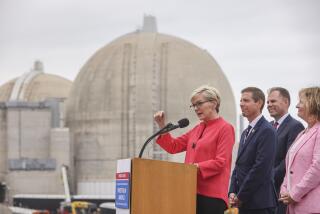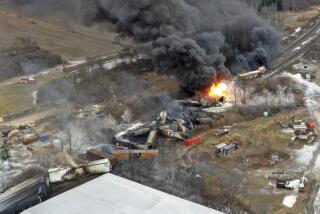The cost of nuclear security
Seven years after the Sept. 11 terrorist attacks, at a time when government officials and outside experts are expressing growing concern about the prospect of a nuclear 9/11, few members of Congress know how much the United States spends on nuclear security or where the money goes.
When Secretary of State-designate Hillary Rodham Clinton and Secretary of Energy-designate Steven Chu head into their Senate confirmation hearings Tuesday, they’ll face difficult questions about how the U.S. is addressing nuclear dangers. Although most lawmakers would rank nuclear threats at the top of their list of national security concerns, they won’t have sufficient or comprehensive information to work with. But Congress can fix this.
Our report, the first public examination of open-source data, shows that the U.S. spent at least$52.4 billion on nuclear weapons and programs in fiscal 2008. This budget, which spans many agencies, not just the Defense Department, does not count related costs for air defense, anti-submarine warfare, classified programs or most nuclear weapons-related intelligence programs.
The 2008 nuclear security budget exceeds all anticipated spending on international diplomacy and foreign assistance ($39.5 billion) and natural resources and the environment ($33 billion). It is nearly double the budget for general science, space and technology ($27.4 billion), and it is almost 14 times what the Energy Department allocated for all energy-related research and development.
Although the size of the overall budget is troubling, another concern is that we spend so little on initiatives to minimize the risk of nuclear and radiological attacks. More than 17 years after the end of the Cold War, it may come as a surprise to most Americans that the U.S. still spends relatively large annual sums upgrading and maintaining its nuclear arsenal ($29 billion), developing ballistic missile defenses ($9.2 billion) and addressing the deferred environmental and health costs associated with more than 50 years of unconstrained bomb building and testing ($8.3 billion).
More alarmingly, the government spends relatively little money locking down or eliminating nuclear threats at their source, before they can reach U.S. shores ($5.2 billion), or preparing for the consequences of a nuclear or radiological attack on U.S. soil ($700 million).
As President-elect Barack Obama’s team heads into an enormously difficult budget season, it will need to propose expenditures that match policy goals and economic realities. How, one might ask Chu, can a Department of Energy that devotes 67% of its budget to nuclear weapons-related programs meet Obama’s plan to develop new and cleaner forms of energy?
Clinton is already on the right track by reportedly seeking to expand the State Department’s role and fighting for a larger budget. State is the frontline agency tackling proliferation concerns with Iran and North Korea, shoring up a rocky relationship with Russia and pursuing cooperation with other states to secure nuclear materials and address the growing threat of nuclear terrorism. Clinton is right to insist that her agency receive more than half a percent ($241.8 million) of the total nuclear security budget.
As both proliferation dangers and fiscal concerns grow, taxpayers will want to know that their government is getting the best returns on its nuclear security investments. But effective oversight of government nuclear security programs is impossible without complete and reliable scrutiny of their cost and impact, and such an accounting has never been available to decision makers.
Congress can remedy this by requiring the executive branch to submit, as part of the annual budget request, an unclassified and classified accounting of all nuclear weapons-related spending. A senior White House official, perhaps within the congressionally mandated office to coordinate nuclear proliferation and counter-terrorism efforts, or the National Security Council, should be responsible for overseeing this exercise, in conjunction with key officials of the Office of Management and Budget and senior budget officials of key departments and agencies.
Working outside of government and using publicly available data, we’ve proved that it is possible to provide a more comprehensive accounting of our nuclear security dollars.
Implementing these recommendations would increase understanding and accountability, which would in turn lead to greater public support for crucial nuclear security programs and a more effective allocation of public resources. When combined with a new focus on nuclear issues, including the Obama administration’s forthcoming Nuclear Posture Review, these efforts would help ensure that political and financial priorities are properly aligned.
The nuclear threat is changing, and as long as it grows, the United States needs to be prepared to address it -- even in a time of austerity. That starts with knowing where the dollars go.
Stephen I. Schwartz is the editor of the Nonproliferation Review at the Monterey Institute of International Studies; Deepti Choubey is the deputy director of the nonproliferation program at the Carnegie Endowment for International Peace.
More to Read
Sign up for Essential California
The most important California stories and recommendations in your inbox every morning.
You may occasionally receive promotional content from the Los Angeles Times.









